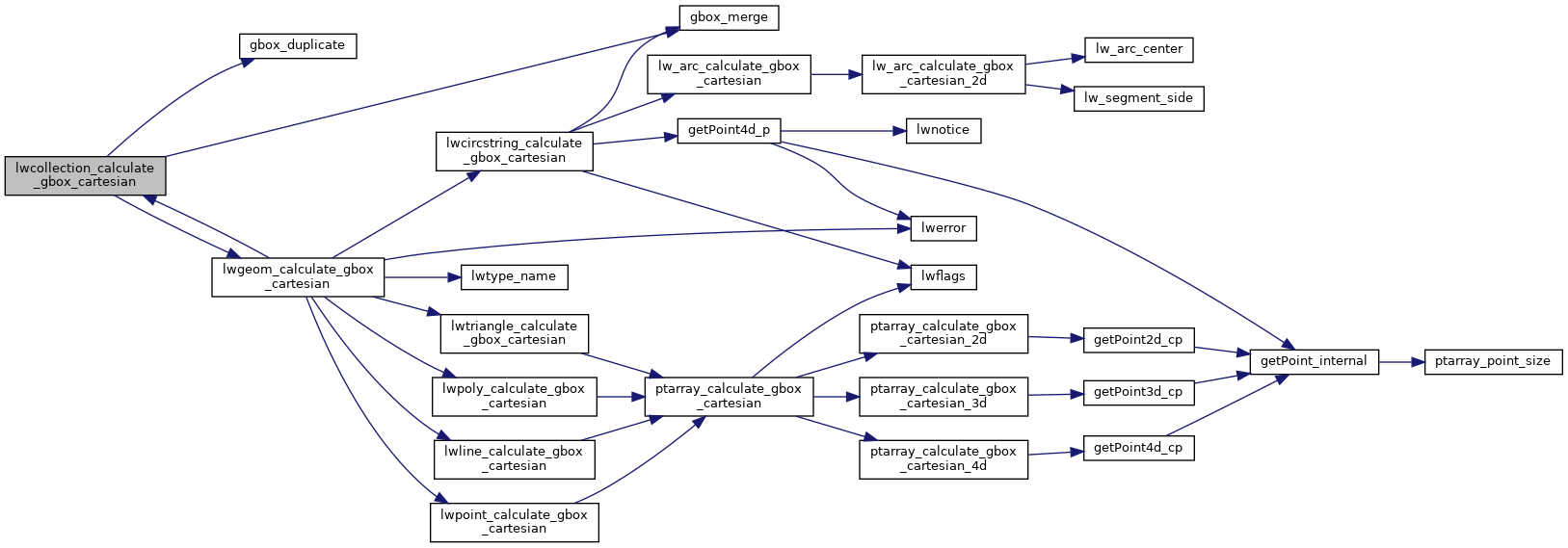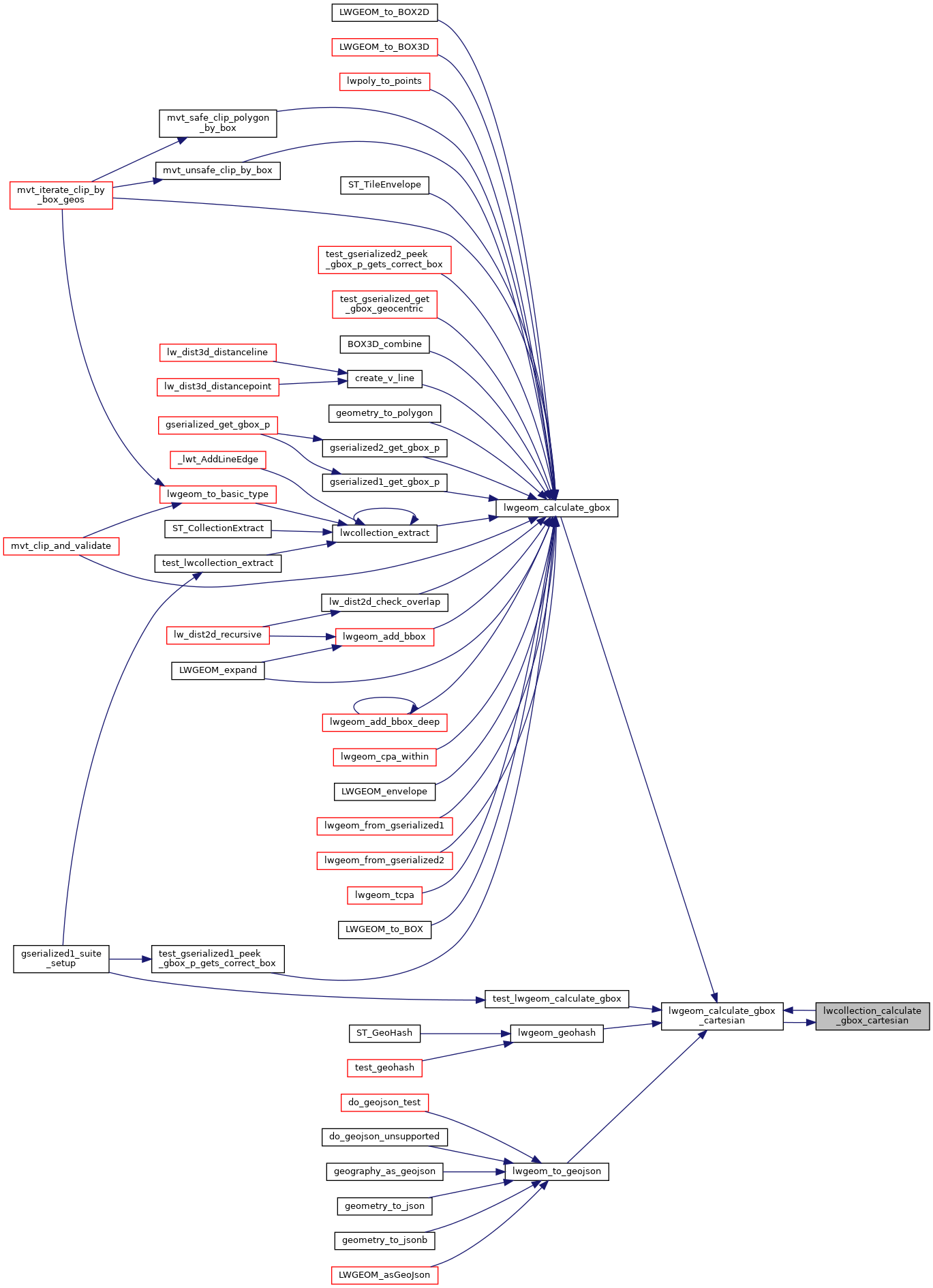◆ lwcollection_calculate_gbox_cartesian()
|
static |
Definition at line 705 of file gbox.c.
int gbox_merge(const GBOX *new_box, GBOX *merge_box)
Update the merged GBOX to be large enough to include itself and the new box.
Definition: gbox.c:257
void gbox_duplicate(const GBOX *original, GBOX *duplicate)
Copy the values of original GBOX into duplicate.
Definition: gbox.c:433
int lwgeom_calculate_gbox_cartesian(const LWGEOM *lwgeom, GBOX *gbox)
Calculate the 2-4D bounding box of a geometry.
Definition: gbox.c:740
Definition: liblwgeom.h:338
Definition: liblwgeom.h:443
References GBOX::flags, LWCOLLECTION::flags, gbox_duplicate(), gbox_merge(), LWCOLLECTION::geoms, LW_FAILURE, LW_FALSE, LW_SUCCESS, LW_TRUE, lwgeom_calculate_gbox_cartesian(), and LWCOLLECTION::ngeoms.
Referenced by lwgeom_calculate_gbox_cartesian().
Here is the call graph for this function:

Here is the caller graph for this function:
